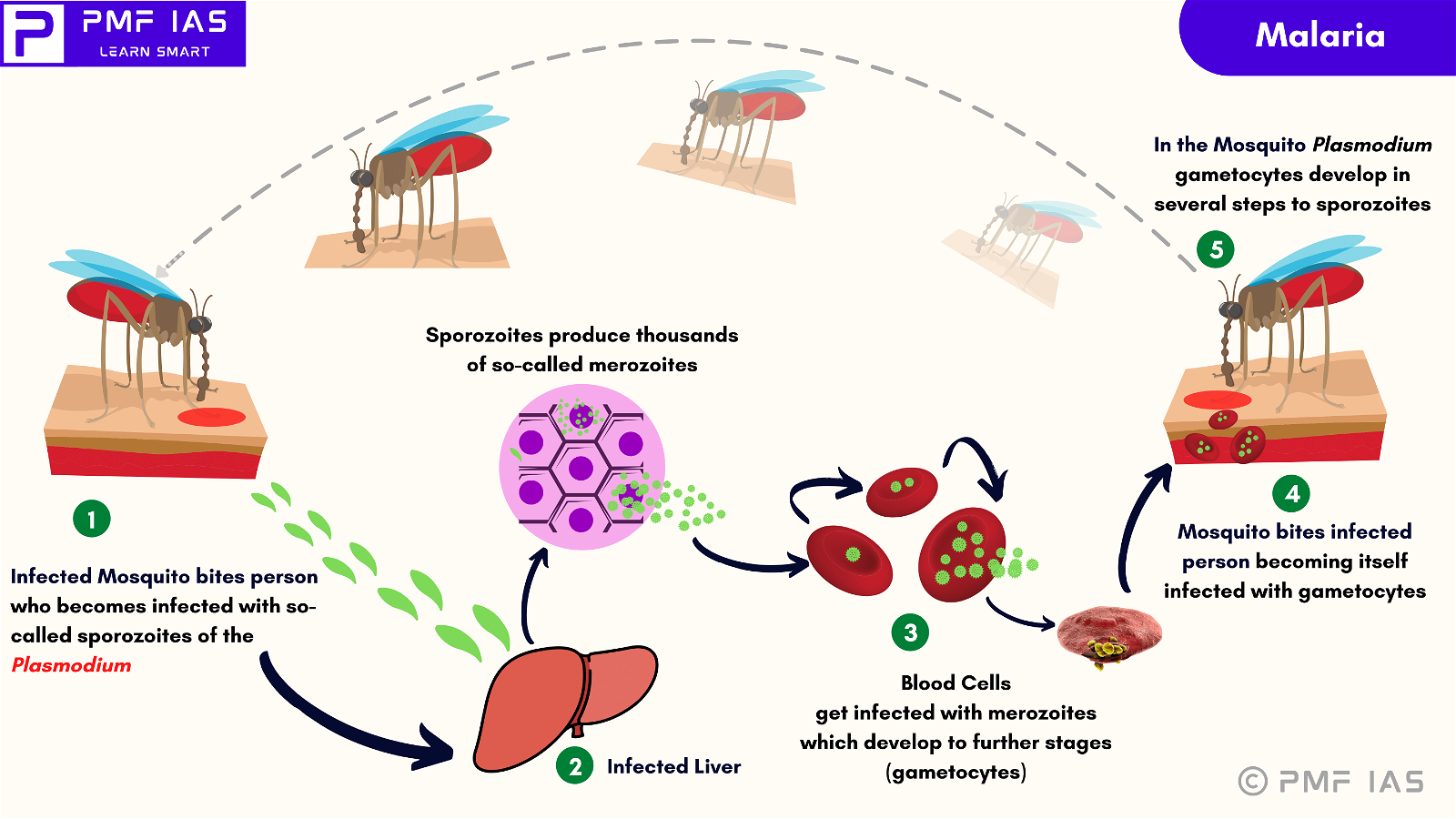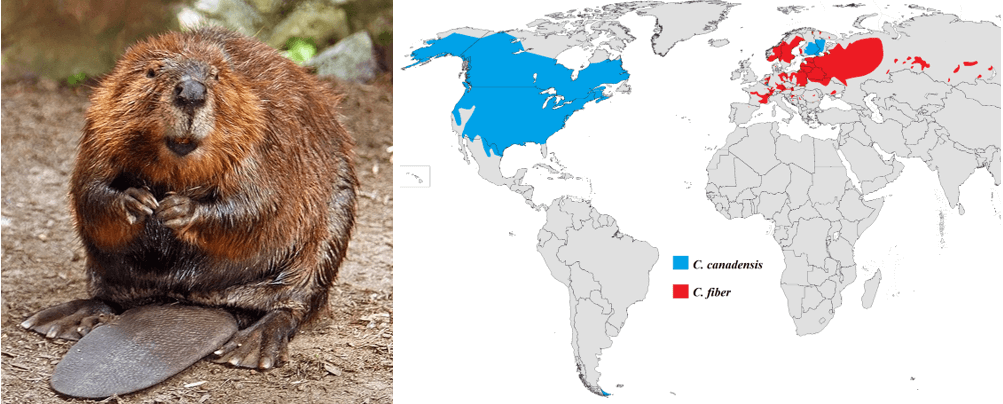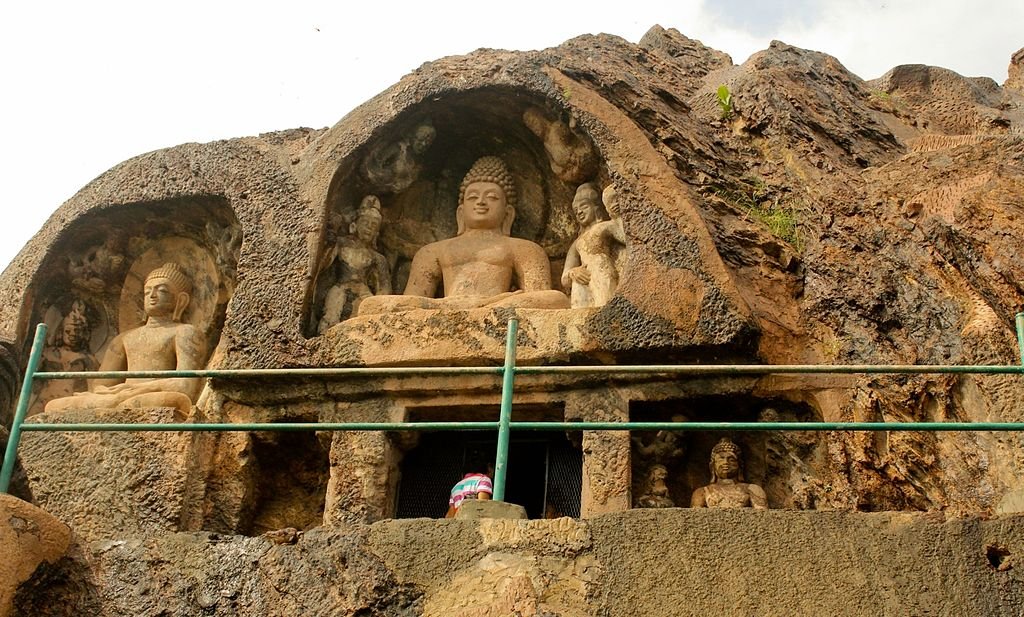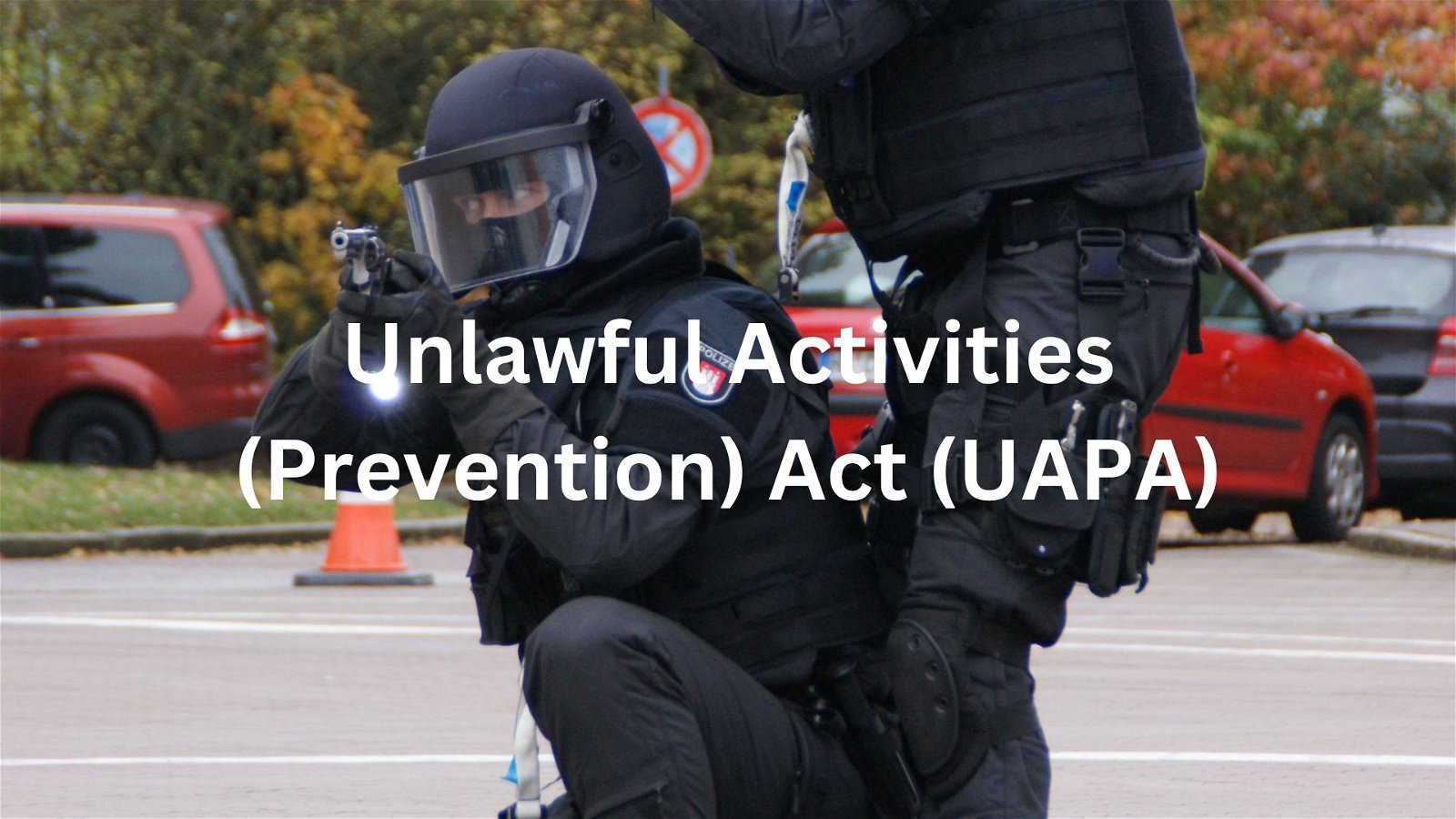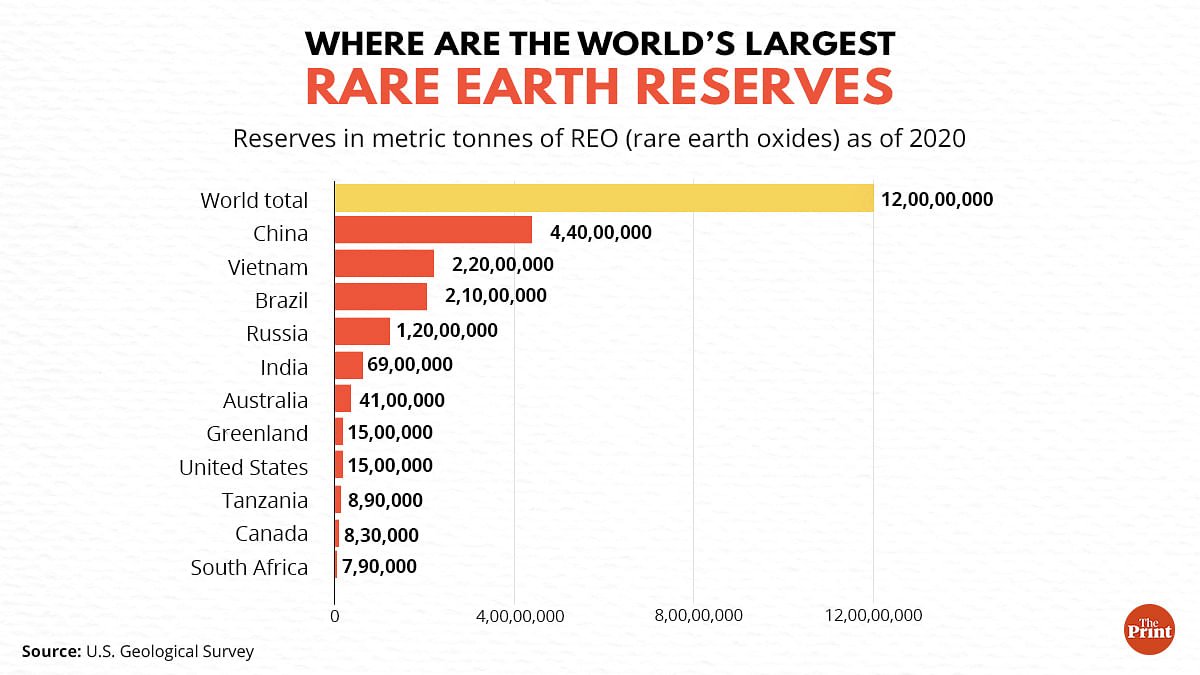
Current Affairs October 11, 2023: Electoral Bonds Legalized Corruption, Mahatma Gandhi, Particularly Vulnerable Tribal Group
Subscribers of "Current Affairs" course can Download Daily Current Affairs in PDF/DOC
Subscribe to Never Miss an Important Update! Assured Discounts on New Products!
Must Join PMF IAS Telegram Channel & PMF IAS History Telegram Channel
{GS1 – MIH – Personalities} Mahatma Gandhi
- Mohandas Karamchand Gandhi was born on October 2, 1869, in Porbandar (Gujarat).
- On 30 January 1948, Gandhiji was assassinated by Nathuram Godse. Martyrs’ Day (Shaheed Diwas or Sarvodaya Day) is observed on January 30 nationwide.
Pietermaritzburg railway station incident
- After completing his law degree in England, MK Gandhi arrived in Durban (South Africa) in 1893.
- He began his career as a legal advisor to the Indian community in South Africa.
- Gandhi faced racial discrimination when he was travelling from Durban to Pretoria.
- Gandhi was evicted from a train at Pietermaritzburg station because his compartment was reserved for “whites only”. This incident was crucial in shaping his future ideological thought process.
- During his struggle in South Africa, he developed his political philosophy based on non-violence and Satyagraha.
Emergence of Gandhi
- Gandhi returned to India in 1915. His success in fighting racial discrimination in South Africa made him famous in India as a leader who stood up for ordinary people.
- The emergence of Gandhi in Indian politics marked the beginning of an era of mass mobilisation.
- He led the peasant protests in Champaran and Kheda and the workers’ protests in Ahmedabad.
First all-India mass Satyagraha
- The British enacted the Rowlatt Act in 1919. It empowered the state to suppress voices against the British government.
- Gandhi gave a call for Satyagraha against the Rowlatt Act in March 1919.
- He formed the Satyagraha Sabha to organise Satyagraha against the Rowlatt Act.
- This was his first all-India mass Satyagraha.
Gandhi and the Non-Cooperation Movement
- The Non-cooperation movement emerged out of the anti-Rowlatt movements and the Khilafat.
- It witnessed an extraordinary public display of Hindu-Muslim solidarity.
- Without Gandhi, converging these two anti-imperialist streams might not have been possible.
Dandi March
- According to salt law, the state monopolised manufacturing and selling salt.
- Gandhi said that it was sinful to tax salt since it is such an essential item of our food.
- In 1930, Gandhiji declared he would lead a march to break the salt law.
- Gandhiji and his 78 followers started a journey from Sabarmati to the coastal town of Dandi.
- On April 6, 1930, he broke the law by gathering natural salt on the Dandi seashore.
All India Harijan Sevak Sangh (All India Anti-Untouchability League)
- Mahatma Gandhi founded it for:
- Eradication of untouchability in India and Working for Harijan or Dalit people
- Upliftment of the Depressed Class of India.
Second Round Table Conference and Gandhi
- Three sessions of the Round Table Conference (RTCs) were held in London.
- The Indian National Congress did not participate in the first and third sessions.
- Gandhi was the sole representative of the Congress at the second session of the RTC.
- Communal issues significantly hindered the conference proceedings.
- Gandhi recognised the complexity of the communal problem and proposed delaying its settlement until a constitutional agreement was reached.
- Gandhi’s suggestions dissatisfied the minority representatives. Thus, the second session was concluded in an atmosphere of bitterness and anxiety.
Gandhi’s opposition to separate the electorate for Dalits
- On 16 August 1932, MacDonald announced the proposal on minority representation, the Communal Award. It recommended a separate electorate for minorities.
- Gandhi strongly opposed providing separate electorates for the depressed classes, as he considered them an essential part of Hindu society.
- He believed that creating a separate electorate for the depressed classes would further divide Indian society along religious and caste lines.
- He did not oppose the representation of Depressed Classes but their separation from Hinduism.
- BR Ambedkar believed that a separate electoral process for Dalits was essential to ensure their political representation and protect their interests in legislative bodies.
- To convince the reluctant Ambedkar to accept his perspective on this issue, Gandhi went on a hunger strike. To save his life, they (BR Ambedkar and Gandhiji) reached the Poona Pact agreement.
- Instead of separate electorates, the pact introduced the concept of reserved seats for the Dalits in provincial and central legislative bodies.
- These reserved seats would be filled through a joint electorate system, where all communities would vote together.
Gandhi’s opposition to the Jewish state in Palestine
- The Gandhi was deeply sympathetic to the plight of the Jewish people in Europe.
- He said, “The German persecution of the Jews seems to have no parallel in history. They’ve been treated like untouchables in Christianity, like how Hindus treat untouchables.
- However, in the article ‘The Jews’ in Harijan in 1938, Mahatma Gandhi opposed a Jewish nation-state (Israel) in Palestine.
- He opposed the creation of a Zionist state in Palestine due to his two central beliefs.
- Palestine was already home to Arab Palestinians. He opposed using force to establish a state in Palestine where the Palestinian Arabs already lived.
- Gandhi believed establishing a Jewish homeland would go against their efforts to gain greater rights worldwide. He said, “If the Jews must only live in Palestine, would they be happy to leave other places they call home?”
- Gandhi’s opinions & anti-imperialism impacted Jawaharlal Nehru, who shaped India’s foreign policy.
- India voted against the UN Resolution, which partitioned Palestine between Jews and Arabs.
Journals and Books by Gandhi
- Gandhi edited several newspapers, including Indian Opinion, Young India, Navajivan and Harijan.
- Books written by Gandhi include:
- Hind swaraj or Indian home rule
- Third class in Indian railway
- My experiment with truth
- Songs from prison
- India of my dreams
{GS2 – MoRD – Schemes} Lakhpati Didi Initiative
- Context (RW): The Ministry of Rural Development (MoRD) is adopting a holistic approach to maximise impact and transform the rural economy through the creation of ‘Lakhpati Didis’.
- The Lakhpati Didi Initiative aims to empower women to establish micro-enterprises in their villages by training two crore women, particularly those in SHGs.
- It is to generate a sustainable income of at least Rs 1 lakh per annum per household.
- This is achieved by promoting multiple livelihood activities under the aegis of DAY-NRLM.
- The initiative offers training in various skills such as plumbing, LED bulb making, drone operation and repair, tailoring and weaving.
For more info on DAY-NRLM: {GS2 – MoRD – Schemes} DAY-NRLM August 2023 Current Affairs PMFIAS
{GS2 – Polity – Comparison} Israel’s Judicial Reform Bill
- Context (BBC): Israel’s PM, Netanyahu, faces many legal corruption cases. The attorney general has filed several charges against him, including fraud, breach of trust, and corruption.
|
- Israel’s parliament has passed a judicial reform bill that removed the SC (and lower courts) power to cancel government decisions that the judges deem “extremely unreasonable”.
- Critics argued that the reform will:
- Protect Mr Netanyahu, who is currently on trial for alleged corruption.
- Undermine Israel’s liberal democracy by removing checks and balances on the executive.
- The government argued that it needed to curb judicial overreach.
Comparison between Indian and Israeli democracies
| Aspect | Indian Democracy | Israeli Democracy |
| Form of Government | Federal Parliamentary | Unitary Parliamentary |
| Head of State | President | President |
| Head of Government | Prime Minister | Prime Minister |
| Legislature | Bicameral (LS and RS) | Unicameral (Knesset) |
| Electoral System | First-past-the-post and
Proportional Representation |
Proportional Representation |
| Judiciary | Independent and SC as the apex body | Independent and SC as the apex body |
Comparison between the Indian Constitution and the Israeli Basic Laws
| Aspect | Indian Constitution | Israeli Basic Laws |
| Nature | A comprehensive, written constitution | Series of Basic Laws |
| Amendment Process | Detailed process with some amendments requiring a special majority in Parliament and ratification by state legislatures | Amended by a simple majority vote in the Knesset |
{GS2 – Polity – IC – Elections} Electoral Bonds Legalized Corruption
- Context (IE I TH): SC will hear a petition challenging the electoral bonds scheme for allegedly promoting corruption and violating citizen’s rights to a corruption-free nation.
- Electoral Bonds are interest-free instruments like a Promissory Note.
- These bonds were introduced in 2018 to bring transparency to the political funding system!
Eligibility
- A citizen of India or a body incorporated in India will be eligible to purchase the bond.
- Political parties registered under section 29A of the RPA, 1951 and secured a minimum of one per cent of votes polled in the last general election for the House of the People or a Legislative Assembly are eligible to receive funding via electoral bonds.
Features of the Electoral Bonds
- It doesn’t carry the name of the payee. However, the bond purchaser needs to submit KYC docs.
- Once purchased, it cannot be cancelled, and no amount will be refunded to the Purchaser.
- SBI is the sole authorised bank for selling Electoral Bonds in Indian Rupees only.
- Such bonds are sold in multiples of Rs 1,000, Rs 10,000, Rs 1 lakh, Rs 10 lakh, and Rs 1 crore.
- Electoral Bonds have a life of only 15 days. After 15 days, it can’t be encashed; instead, the amount will be deposited in the PM Relief Fund.
- They can be purchased either Singly or Jointly with other Individuals, but not more than three Applicants per Application Form.

Issues with the Electoral Bonds Scheme (EBS)
- It brought opacity rather than transparency to election funding.
- The anonymity of electoral bonds is only for the broader public and opposition parties. It leaves the door open for the government to know who funds its opponents.
- Earlier, the company could donate up to 7.5% of the average net profits of the company’s last three years. Now, the government has amended the Companies Act to remove this limit, opening the doors to no limit on funding by corporate India.
RBI opposition to Electoral Bonds Scheme (EBS)
- The RBI opposed the EBS on four grounds:
- It is superfluous and can be replaced by existing banking instruments (cheques, drafts, etc).
- It can be misused for money laundering and undermine the banknotes authority.
- It does not bring transparency as it gets transferred to various hands before donation.
- It does not align with Section 31 of the RBI Act, 1934.
Section 31 of the RBI Act
|
Bypassing Rajya Sabha (RS)
- The NDA government’s decision to pass EBS in the form of a Money Bill under Article 110, which the RS has no power to reject or amend, is an assault on the spirit of the Constitution.
- It is not just a matter of procedural irregularity but a matter of substantive illegality.
- Justice DY Chandrachud, in his dissent in the Aadhaar review case (Beghar Foundation v. Justice KS Puttuswamy), has pointed out that the RS’s role in lawmaking is vital and ignoring its authority undermines democracy and constitutes a fraud on the Constitution.
Opaqueness of Political parties
- Under EBS, two amendments were brought that violate citizens’ right to RTI about the political parties/candidates, infringing upon the right to make a reasonably informed decision.
- Section 29C of the RPA Act (mandates furnishing a contribution report) was amended to exempt political parties from sharing details of contributions received through electoral bonds with the ECI. The ECI has described this as a retrograde step.
- Section 182 of the Companies Act 2013 exempted companies from declaring their contributions to political parties. It also removed the cap on corporate donations, under which a company could not contribute more than 7.5% of its net profits for the previous three years.
- The ECI has opined that this opens up the possibility of shell companies being set up to make donations to political parties.
Political parties are not under RTI
|
The burden on the taxpayer (Source: IE)
- The provision that donors donating should pay the cost of administering electoral bonds (banking fees, printing costs, etc) was dropped.
- The total amount collected through EBs has gone up to Rs 10,791 crore till 2022 since its inception and the brunt borne by the taxpayers is over ₹7.63 crore for the sale of electoral bonds.
- Rubbing salt in the wounds, an amendment to Section 13A of the IT Act of 1961 exempted the tax on contributions received by political parties through electoral bonds.
Masking the truth
|
Role of the SBI (Source: HuffPost)
- The design of the EBS imposes an uneven burden on institutions like the SBI, which are expected to remain impartial implementers. But in reality, they would succumb to political pressures.
- Reports revealed how a secret number on each electoral bond allows SBI to trace every transaction from the beginning to the end, contrary to the claim of donor anonymity.
- The government has also made SBI accept expired electoral bonds worth ₹20 crore.
EBS Tremendously Benefits The National Party in Power
- The total donations declared by the 7 national and 24 regional parties during 2019 were Rs 13,190.68 crore (80% of total donations) and Rs 3,246.95 crore, respectively.
- The total donations declared by the BJP are more than three times the total donations declared by all other national parties. More than 52% of BJP’s donations came from electoral bonds.
- The corporate donations declared by the BJP are at least three to four times more than the total corporate donations.

Indifferent Attitude by SC
- SC order in 2019 directed all political parties to submit the details to the ECI on electoral bonds in a ‘sealed cover’. But no official revelations have been made yet. (Paradoxically, the Court has advocated for the end of sealed cover jurisprudence.)
Challenge in Supreme Court (Source: TH)
- SC has inordinately delayed hearing such an important constitutional issue.
- It declined to stay the Centre’s Electoral Bond Scheme as it considered it a “weighty issue” having “tremendous bearing on the sanctity of the electoral process in the country”.
Conclusion
- To call a nation a democracy doesn’t just mean equality of vote to everyone. What matters is free and fair elections, which are transparent, inclusive and accountable and provide equitable opportunities to compete.
- The EBS, despite its institutional framework aimed at regulating campaign finance, is replete with various inadequacies and vulnerabilities, which is the antithesis of its sole objective.
{GS2 – Vulnerable Sections – STs} Habitat Rights of PVTG
- Context (IE): Baiga community, a Particularly Vulnerable Tribal Group (PVTG), became the second PVTG to get habitat rights in Chhattisgarh, after the Kamar tribal group.
|
Habitat Rights
- Habitat rights recognition grants communities the right to their traditional territory, socio-cultural practices, livelihoods, ecological and traditional knowledge, and the protection of their natural and cultural heritage. (Habitat rights don’t grant ownership to property).
- Habitat rights are given to PVTGs under section 3(1) (e) of The Scheduled Tribes and Other Traditional Forest Dwellers (Recognition of Forest Rights) Act, 2006 or Forest Rights Act (FRA).
- According to FRA, “Habitat comprises the customary habitat and such other habitats in reserved forests and protected forests of primitive tribal groups and pre-agricultural communities and other forest dwelling Scheduled Tribes.”
How the Government Fixes a Habitat
- The procedure is based on guidelines from the Ministry of Tribal Affairs (MoTA) in 2014.
- The tribal leaders are consulted about the extent of their culture, traditions, and occupation.
- The government corroborates it, and then a habitat is declared.
- The United Nations Development Programme (UNDP) provides technical assistance to the administration to implement the habitat rights law.
- Four state-level departments, i.e., Forest, Revenue, Tribal, and Panchayati Raj, coordinate with the UNDP team to ascertain habitats.
Particularly Vulnerable Tribal Group (PVTG)
- PVTG (previously known as a Primitive Tribal Group) is a sub-classification of Scheduled Tribes considered more vulnerable among the tribal groups.
- Dhebar Commission (or Tribal Panchsheel Committee) recommended the creation of Primitive Tribal Groups (PTGs). Based on this, the Indian Government created PTGs in 1975.
- In 2006, PTGs were renamed as PVTGs.
- At present, there are 75 PVTGs out of 705 Scheduled Tribes.
- Odisha has the highest number of PVTGs.
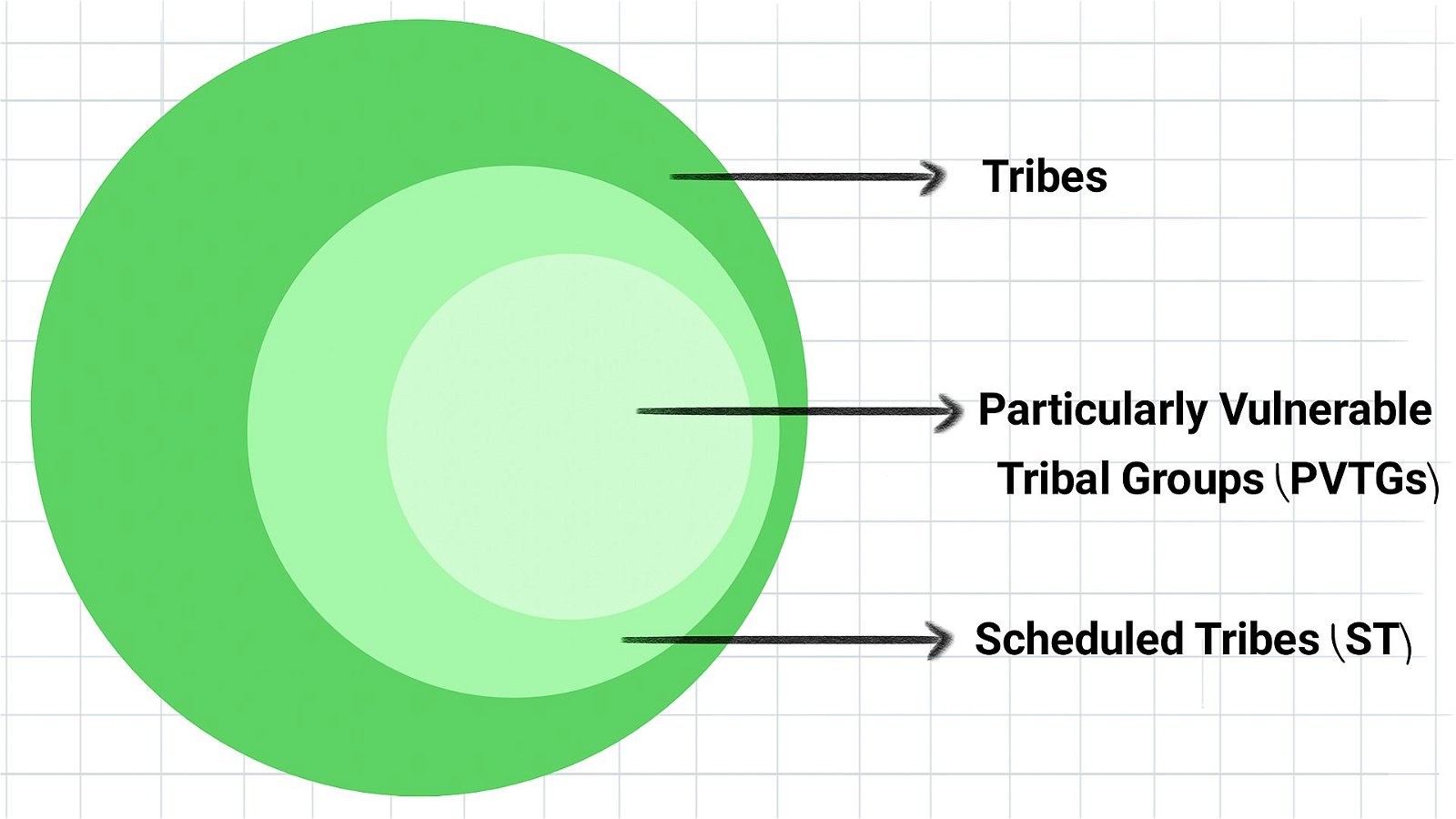
- Criteria followed for identification of PVTGs are:
- Pre-agricultural level of technology
- Low level of literacy
- Economic backwardness
- A declining or stagnant population
|
PVTGs with Habitat Rights
- Only three PVTGs have habitat rights.
- Bharia Tribe (Madhya Pradesh): 1st PVTG to get habitat right.
- Kamar Tribe (Chhattisgarh)
- Baiga Tribe (Chhattisgarh)
Benefits of Habitat Rights to PVTGs
- Protect traditional habitats from developmental activities: Habitat rights require consent and consultation of gram sabha for development activities. This provision helps protect traditional habitats from harmful activities like mining.
|
{GS2 – Vulnerable Sections – Women} Gender Gap
- Context (TH | TH): Sveriges Riksbank Prize in Economic Sciences in Memory of Alfred Nobel (popularly known as Nobel Prize in Economics), 2023, has been awarded to Claudia Goldin.
- She has been awarded for advancing our understanding of the labour market gender gap.
- Her research broke the prevailing belief among researchers that women’s labour force participation increased with the economy’s growth.
- Before her work, it was generally believed that women’s labour force participation increased as the economy transitioned from agrarian to industrialised and then to a service sector.
Women’s Labour Force Participation During the Industrialisation Era
- During the agrarian era, women were more likely to participate in the labour force.
- But, the participation of married women in the labour force decreased during industrialisation.
- Industrialisation had made it harder for married women to work because they could not work from home and could not balance their families’ demands.
Women’s Labour Force Participation During the Service Sector Era
- Female participation in the labour force increased with the growth of the service sector because of.
- Increased education levels
- Increased demand for labour
- Birth control pills (more control on childbirth)
- Change in women’s expectations
Limitations for Women’s Labour Force Participation
- Social stigma, legislation, and other institutional barriers have slowed the narrowing of the gender employment gap in the service sector era.
- “Marriage bars” and women’s expectations about their future careers are particularly important.
Marriage Bars
- Marriage bars are policies adopted to restrict the employment of married women.
- These practices peaked during the 1930s Great Depression and the ensuing years.
Women’s Expectations About Their Future Careers
- Their mothers’ experiences influenced the women’s expectations from their careers.
- This led to educational and professional choices that did not expect long, uninterrupted careers.
- But, with the growth of education and different societal circumstances, these scenario is changing.
Pay Discrimination
- Gendered pay discrimination increased significantly with the growth of the service sector.
- It was surprising because when both men and women worked in factories with pay tied to daily output, the gender pay gap was minimal.
Pay Discrimination and Parenthood
- One factor that significantly impacted how men were paid versus women was childbirth.
- Women faced pay penalties at work due to their increased parenting responsibilities and a slower ascent up the pay scale.
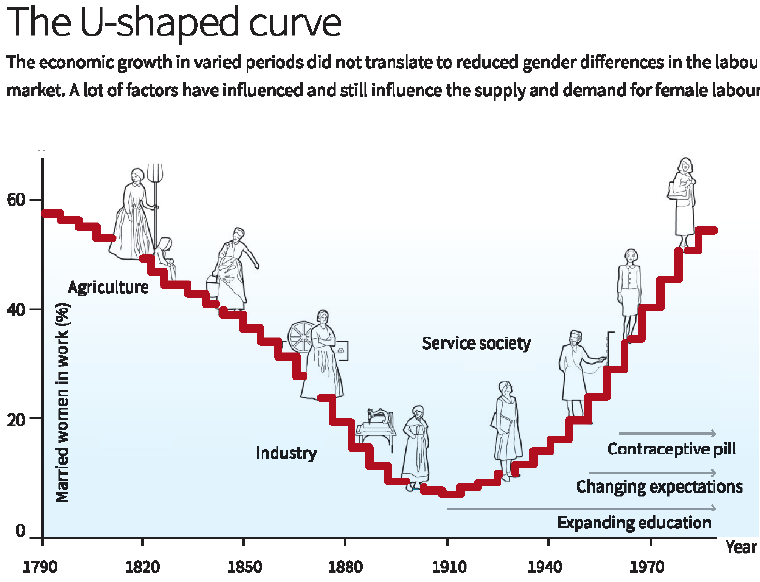
Way Forward
- More women should assume leadership roles and pave the way for gender equality.
- Women’s Reservation Bill 2023 is a step in the direction.
Reservation
- Reservation is the most effective form of affirmative action for narrowing gender gap.
- It is an action of equity and equity is the first step to equality.
- The argument that it leads to inefficiency or incompetency is invalid, where discrimination has played an extended role.
Leadership Role
- Historically, it is seen that women are seldom given leadership roles.
- Moreover, most women who have assumed leadership roles come from a privileged background.
- Despite their privilege, they also took a long time to assume power.
- India’s 77 years of independence has only one female Prime Minister and two female Presidents.
{GS3 – Envi – Pollution} Excess Isoprene: A Curse for Air Quality
- Context (TWC): Due to global warming, plants like oaks and poplars will emit more isoprene, which will worsen the air quality.
Isoprene
- Isoprene is a colourless, volatile liquid hydrocarbon.
- It is the most abundant non-methane VOC emitted into the atmosphere.
- Sources:
- Biogenic Sources: Most isoprene is produced by plants and by some algae and bacteria. It is also produced in small amounts by humans and other animals.
- Anthropogenic sources: It is also released by activities like the combustion of fossil fuels, production of petroleum products and synthetic rubber, etc.
- Uses: Isoprene is used in natural and synthetic rubber, adhesives, pharmaceuticals, and fragrances.
- It is the main component of natural rubber.
|
Volatile Organic Compounds (VOCs)
|
Benefits of Isoprene
- Pests and Disease Resistance: Isoprene defends plants against pests and diseases. It can be toxic to some insects and attract beneficial insects that prey on pests.
- Heat Tolerance: It can protect plants from high heat by safeguarding their photosynthetic systems.
- Atmospheric chemistry: It helps to remove specific pollutants from the air. It reacts with chemicals in the atmosphere to create secondary organic aerosols, which act as cloud condensation nuclei.
Demerits of Isoprene
- Ground-level ozone formation: Ground-level ozone forms when sunlight reacts with nitrogen oxides and VOCs. It leads to health problems, crop damage, and reduced visibility.
- Secondary organic aerosol formation: Isoprene also reacts with other atmospheric chemicals to form secondary organic aerosols, which reduces air quality and visibility.
- Climate change: Increased isoprene emissions raise tropospheric ozone and methane levels, which are significant greenhouse gases. Thus contributing to global warming.
Global Warming Effect on Isoprene Emissions from Plants
- Global warming has two implications for isoprene emissions from plants:
- Increasing carbon dioxide in the atmosphere slows the rate of isoprene emissions.
- Increasing temperatures accelerate the rate of isoprene emissions.
- However, the temperature effect trumps the carbon dioxide effect.
{GS3 – IE – Banking} PCA Framework
- Context (MINT I HBL): RBI has decided that the Prompt Corrective Action (PCA) framework will apply to Government NBFC except those in the base layer with effect from October 1, 2024.
|
- The RBI PCA considers banks risky if they fall below certain thresholds on three parameters:
- Asset Quality / Non-Performing Assets (NPAs)
- Capital (BASEL Capital Adequacy Ratio (CRAR))
- Leverage (BASEL Tier 1 Capital Ratio)
| Indicator | Risk Threshold-1 | Risk Threshold-2 | Risk Threshold-3 |
| CRAR | <15% but ≥12% | <12% but ≥9% | <9% |
| Tier I Capital Ratio | <10% but ≥8% | <8% but ≥6% | <6% |
| NNPA Ratio | >6% but ≤ 9% | >9% but ≤12% | >12% |
- The RBI can invoke a corrective action plan in breach of the risk thresholds.
Non-Performing Assets (NPAs)
BASEL Capital Adequacy Ratio
BASEL Tier 1 Capital
|
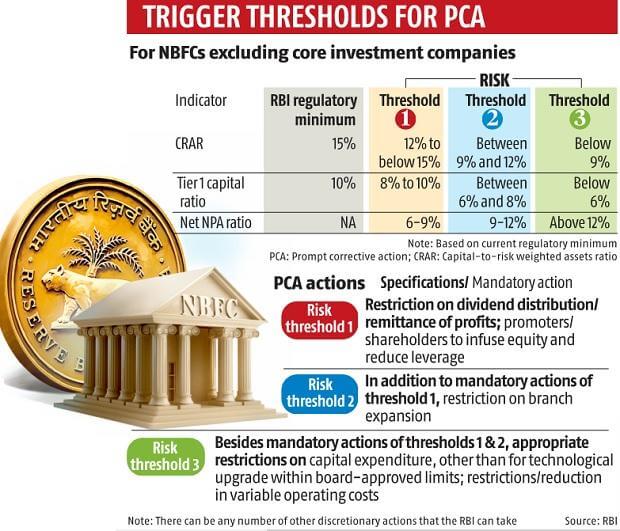
Prompt Corrective Action (PCA) Framework
- The PCA Framework, established by the RBI in 2002, ensures the stability of banks and NBFCs.
- In 2022, it was extended for most NBFCs, excluding government NBFCs.
- Now, the PCA framework applies to:
- All Scheduled Commercial Banks except Regional Rural Banks, Payment Banks, and Small Finance Banks.
- Most NBFCs, including government NBFCs.
- PCA allows timely supervisory intervention and requires entities to implement remedial measures to restore financial health.
Historical Perspective
- 2002: RBI Governor Bimal Jalan introduced PCA for Scheduled Commercial Banks, excluding Regional Rural Banks (RRBs).
- 2018: NABARD implemented a separate PCA framework for RRBs with its own set of regulations.
PCA Classification
- NBFCs are categorised into Risk Categories 1, 2, or 3 (The higher the number, the higher the risk), based on their capital, loan-asset quality, and other factors.
Corrective Actions (depending on the risk threshold)
- Banks receiving Strict Warnings.
- Deeper Audit and supervision.
- Restrictions on Directors’ Salaries and Dividends.
- Branch Expansion and Lending Operations Restrictions.
- Requiring promoters/shareholders to infuse equity and reduce leverage.
- Mergers or Shutdown: Under the Banking Regulation Act of 1949.
Whitelisting
- Banks in the PCA list can be removed from it by improving their Non-Performing Assets (NPAs), enhancing capital adequacy, and increasing profitability.
Supervisory Action Framework (SAF) for Urban Co-operative Banks
Regulations Review Authority (RRA 2.0)
|





![PMF IAS Environment for UPSC 2022-23 [paperback] PMF IAS [Nov 30, 2021]…](https://pmfias.b-cdn.net/wp-content/uploads/2024/04/pmfiasenvironmentforupsc2022-23paperbackpmfiasnov302021.jpg)
